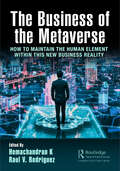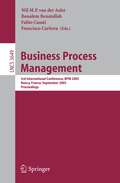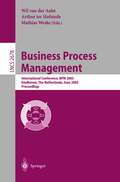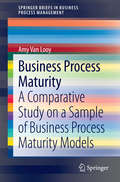- Table View
- List View
The Business of the Metaverse: How to Maintain the Human Element Within this New Business Reality
The metaverse is the future of business applications and models, and this ground-breaking book points and details a complete and clear picture of how the metaverse can impact the various business segments and how the human element will be maintained within the evolutionary change. This book serves as a guide for those planning to implement and expand the metaverse in their business as well as those already using it on limited levels. Simulated intelligence innovation can reveal intricate and significant examples in robust and information-rich situations that posture difficulties for human insight. In addition, similar to other burgeoning advancements, the experience and aptitudes accumulated by vendors and consumers, alongside the steady analysis of interactions and information, empower metaverse calculations to be refined and improved. This book illustrates the current advancements and results and expands the analysis of human-centric metaverse applications to business segments and their future effects on overall enterprise management. Essentially, this book elaborates on the impact of the metaverse across business sectors through the use of case studies.
The Business of the Supreme Court: A Study in the Federal Judicial System
by James M. LandisAs Felix Frankfurter and James Landis write in their preface to The Business of the Supreme Court, "To an extraordinary degree legal thinking dominates the United States. Every act of government, every law passed by Congress, every treaty ratified by the Senate, every executive order issued by the President is tested by legal considerations and may be subjected to the hazards of litigation. Other Nations, too, have a written Constitution. But no other country in the world leaves to the judiciary the powers which it exercises over us." This classic volume, first published in 1928, originated in a series of articles written by Frankfurter, then a professor of law at Harvard University, and his student, Landis, for the Harvard Law Review. These articles chronicled and analyzed the many judiciary acts that were passed between 1789 and 1925, and illuminated the intimate connection between form and substance in the life of American law. For instance: When a community first decided to enact zoning laws--the Supreme Court had to approve. When the United States made a treaty with Germany following World War I--the Supreme Court had to define the limits and meaning of the treaty.Newly reissued with an introduction by constitutional expert Richard G. Stevens, The Business of the Supreme Court is still as fresh and relevant today as it was when first published. It is a work that will aid the student of the law to both love the law and remain true to its purposes.
The Business of the Supreme Court: A Study in the Federal Judicial System
by James M. LandisAs Felix Frankfurter and James Landis write in their preface to The Business of the Supreme Court, "To an extraordinary degree legal thinking dominates the United States. Every act of government, every law passed by Congress, every treaty ratified by the Senate, every executive order issued by the President is tested by legal considerations and may be subjected to the hazards of litigation. Other Nations, too, have a written Constitution. But no other country in the world leaves to the judiciary the powers which it exercises over us." This classic volume, first published in 1928, originated in a series of articles written by Frankfurter, then a professor of law at Harvard University, and his student, Landis, for the Harvard Law Review. These articles chronicled and analyzed the many judiciary acts that were passed between 1789 and 1925, and illuminated the intimate connection between form and substance in the life of American law. For instance: When a community first decided to enact zoning laws--the Supreme Court had to approve. When the United States made a treaty with Germany following World War I--the Supreme Court had to define the limits and meaning of the treaty.Newly reissued with an introduction by constitutional expert Richard G. Stevens, The Business of the Supreme Court is still as fresh and relevant today as it was when first published. It is a work that will aid the student of the law to both love the law and remain true to its purposes.
The Business Planner: A Complete Guide to Raising Finance for Your Business
by Iain MaitlandThe Business Planner: A Complete Guide to Raising Finance for Your Business focuses on the steps and approaches involved in business planning aimed at increasing the financial capabilities of a business. The book first elaborates on introducing business plans and writing the commercial section. Discussions focus on detailing the market, describing products and services, listing of objectives, using a business plan, composing an introductory letter, and compiling a business plan. The text then ponders on drawing up the financial section, as well as preparing the profit budget, drafting cash flow forecast, projecting annual accounts, and examining financial requirements. The manuscript takes a look at adding the appendices, including checking the contents, positioning the appendices, and presenting the documents. The text also examines the setting up of a manufacturing business, purchasing of a shop, expanding a service agency, and starting a home-based venture. The publication is a vital source of data for businesspeople and researchers interested in the processes involved in putting up a business.
Business Plasticity Through Disorganization
by Dinuka B. HerathDisorganization occurs in all areas of modern business; and yet, disorganization has traditionally been viewed as a negative factor in business and organization performance. However, in a dynamic 21st century environment our conventional structured, rigid responses in dealing with such messiness are not working. Business Plasticity Through Disorganization presents a novel approach to both academics and practitioners on how to break the shackles of rigidity and eliminate our fear of disorganization. Through a chronological discussion of the birth of the concept of 'disorganization' and its gradual evolution into 'business plasticity', the book explores ways in which embracing and leveraging messiness can help improve the way we create, innovate and run our businesses. Challenging existing theories and approaches to disorganization, as well as presenting new evidence from both research and practice, Herath promotes new conceptual thinking aimed at promoting flexible 'plasticity' in the modern organization to build greater functional capability globally.
Business Plasticity Through Disorganization
by Dinuka B. HerathDisorganization occurs in all areas of modern business; and yet, disorganization has traditionally been viewed as a negative factor in business and organization performance. However, in a dynamic 21st century environment our conventional structured, rigid responses in dealing with such messiness are not working. Business Plasticity Through Disorganization presents a novel approach to both academics and practitioners on how to break the shackles of rigidity and eliminate our fear of disorganization. Through a chronological discussion of the birth of the concept of 'disorganization' and its gradual evolution into 'business plasticity', the book explores ways in which embracing and leveraging messiness can help improve the way we create, innovate and run our businesses. Challenging existing theories and approaches to disorganization, as well as presenting new evidence from both research and practice, Herath promotes new conceptual thinking aimed at promoting flexible 'plasticity' in the modern organization to build greater functional capability globally.
Business Power and Conflict in International Environmental Politics
by R. FalknerThis book puts forward a distinctive theoretical approach and analytical framework for studying business as an international actor in the environmental field, and provides detailed case studies of the most important environmental challenges in recent years.
Business Process Management: 3rd International Conference, BPM 2005, Nancy, France, September 5-8, 2005, Proceedings (Lecture Notes in Computer Science #3649)
by Wil M. P. Van Der Aalst Boualem Benatallah Fabio Casati Francisco CurberaThis volume contains the proceedings of the 3rd International Conference on Business Process Management (BPM 2005), organized by LORIA in Nancy, France, September 5–8, 2005. This year, BPM included several innovations with respect to previous e- tions, most notably the addition of an industrial program and of co-located workshops. This was the logical result of the signi?cant (and still growing) - dustrial interest in the area and of the broadening of the research communities working on BPM topics. The interest in business process management (and in the BPM conference) was demonstrated by the quantity and quality of the paper submissions. We received over 176 contributions from 31 countries, accepting 25 of them as full papers (20 research papers and 5 industrial papers) while 17 contributions were accepted as short papers. In addition to the regular, industry, and short pres- tations invited lectures weregiven by Frank Leymannand Gustavo Alonso.This combination of research papers, industrial papers, keynotes, and workshops, all of very high quality, has shown that BPM has become a mature conference and the main venue for researchers and practitioners in this area. We would like to thank the members of the Program Committee and the reviewers for their e?orts in selecting the papers. They helped us compile an excellent scienti?c program. For the di?cult task of selecting the 25 best papers (14% acceptance rate) and 17 short papers each paper was reviewed by at least three reviewers (except some out-of-scope papers).
Business Process Management: International Conference, BPM 2003, Eindhoven, The Netherlands, June 26-27, 2003, Proceedings (Lecture Notes in Computer Science #2678)
by Wil Van Der Aalst Arthur Ter Hofstede Mathias WeskeThe refereed proceedings of the International Conference on Business Process Management, BPM 2003, held in Eindhoven, The Netherlands, in June 2003. The 25 revised full papers presented together with an introductory survey article were carefully reviewed and selected from 77 submissions. Among the issues addressed are Web services, workflow modeling, business process modeling, collaborative computing, computer-supported collaborative work, workflow patterns, business process engineering, business process patterns, workflow systems, Petri nets, process services, business process reengineering, and business process management tools.
Business Process Management: 5th International Conference, BPM 2007, Brisbane, Australia, September 24-28, 2007, Proceedings (Lecture Notes in Computer Science #4714)
by Gustavo Alonso Peter Dadam Michael RosemannThis book constitutes the refereed proceedings of the 5th International Conference on Business Process Management, BPM 2007, held in Brisbane, Australia, in September 2007. The papers are organized in topical sections on business process maturity and performance, business process modeling, case studies, compliance and change, process configuration and execution, formal foundations of BPM, business process mining, and semantic issues in BPM.
Business Process Management: 10th International Conference, BPM 2012, Tallinn, Estonia, September 3-6, 2012, Proceedings (Lecture Notes in Computer Science #7481)
by Alistair Barros Avigdor Gal Ekkart KindlerThis book constitutes the proceedings of the 10th International Conference on Business Process Management, BPM 2012, held in Tallinn, Estonia, in September 2012. The 17 regular papers and 7 short papers included in this volume were carefully reviewed and selected from 126 submissions. The book also features two keynote lectures which were given at the conference. The papers are organized in topical sections named: process quality; conformance and compliance; BPM applications; process model analysis; BPM and the cloud; requirements and performance; process mining; and refactoring and optimization.
Business Process Management: Second International Conference, BPM 2004, Potsdam, Germany, June 17-18, 2004, Proceedings (Lecture Notes in Computer Science #3080)
by Jörg Desel Barbara Pernici Mathias WeskeIn recent years the management of business processes has emerged as one of the major developments to ease the understanding of, communication about, and evolution of process-oriented information systems in a variety of appli- tion domains. Based on explicit representations of business processes, process stakeholders can communicate about process structure, content, and possible improvements. Formal analysis, veri?cation and simulation techniques have the potential to show de?cits and to e?ectively lead to better and more ?exible processes. Process mining facilitates the discovery of process speci?cations from process logs that are readily available in many organizations. This volume of Springer’s Lecture Notes in Computer Science contains the papers presented at the 2nd International Conference on Business Process M- agement (BPM 2004) which took place in Potsdam, Germany, in June 2004. From more than 70 submissions BPM 2004 received, 19 high-quality research papers were selected. BPM 2004 is part of a conference series that provides a forum for researchers and practitioners in all aspects of business process management. In June 2003, the 1st International Conference on Business Process Management took place in Eindhoven, The Netherlands. Its proceedings were published as Volume 2678 of Lecture Notes in Computer Science by Springer-Verlag. A previous volume (LNCS1806)onBusinessProcessManagementwasbasedonfoureventsdevoted to this topic.
Business Process Management: 4th International Conference, BPM 2006, Vienna, Austria, September 5-7, 2006, Proceedings (Lecture Notes in Computer Science #4102)
by Schahram Dustdar José Luiz Fiadeiro Amit ShethThis book constitutes the refereed proceedings of the 4th International Conference on Business Process Management, BPM 2006. The book presents 20 revised full papers, 5 industrial papers, and 15 short papers together with an invited paper and the abstract of an invited talk. The papers are organized in topical sections on monitoring and mining, service composition, process models and languages, dynamic process management, Web service composition, and applied business process management.
Business Process Management: 13th International Conference, BPM 2015, Innsbruck, Austria, August 31 -- September 3, 2015, Proceedings (Lecture Notes in Computer Science #9253)
by Hamid Reza Motahari-Nezhad Jan Recker Matthias WeidlichThis book constitutes the proceedings of the 13th International Conference on Business Process Management, BPM 2015, held in Innsbruck, Austria, in August/September 2015. The 21 regular papers, 7 short papers and 2 inductrial papers included in this volume were carefully reviewed and selected from 125 submissions. The papers are organized in topical sections on runtime process management, process modeling, process modeling discovery, business process models and analytics, BPM in industry, process compliance and deviations, energing and practical areas of BPM, and process monitoring.
Business Process Management: 14th International Conference, BPM 2016, Rio de Janeiro, Brazil, September 18-22, 2016. Proceedings (Lecture Notes in Computer Science #9850)
by Marcello La Rosa Peter Loos Oscar PastorThis book constitutes the proceedings of the 14th International Conference on Business Process Management, BPM 2016, held in Rio de Janeiro, Brazil, in September 2016.The focus of the conference covers a range of papers focusing on automated discovery, conformance checking, modeling foundations, understandability of process representations, runtime management and predictive monitoring. The topics selected by the authors demonstrate an increasing interest of the research community in the area of process mining, resonated by an equally fast-growing uptake by different industry sectors.
Business Process Management Cases: Digital Innovation and Business Transformation in Practice (Management for Professionals)
by Jan Vom Brocke Jan MendlingThis book is the first to present a rich selection of over 30 real-world cases of how leading organizations conduct Business Process Management (BPM). The cases stem from a diverse set of industry sectors and countries on different continents, reporting on best practices and lessons learned. The book showcases how BPM can contribute to both exploitation and exploration in a digital world. All cases are presented using a uniform structure in order to provide valuable insights and essential guidance for students and practitioners.
Business Process Management Workshops: BPM 2005 International Workshops, BPI, BPD, ENEI, BPRM, WSCOBPM, BPS, Nancy, France, September 5, 2005. Revised Selected Papers (Lecture Notes in Computer Science #3812)
by Christoph Bussler Armin HallerThis book constitutes the refereed post-proceedings of six international workshops held in conjunction with the Third International Conference on Business Process Management, BPM 2005, in September 2005. The 41 revised full papers presented were carefully reviewed and selected. Among the issues addressed are fundamental process modeling, Web service choreography and orchestration, business process reference models, and business processes and services.
Business Process Management Workshops: BPM 2006 International Workshops, BPD, BPI, ENEI, GPWW, DPM, semantics4ws, Vienna, Austria, September 4-7, 2006, Proceedings (Lecture Notes in Computer Science #4103)
by Johann Eder Schahram DustdarThis book constitutes the refereed proceedings of 6 international workshops held in conjunction with the 4th International Conference on Business Process Management, BPM 2006, in Vienna, Austria in September 2006. The 40 revised full papers presented were carefully reviewed and selected from a total of 94 overall submissions to six international workshops.
Business Process Management Workshops: BPM 2007 International Workshops, BPI, BPD, CBP, ProHealth, RefMod, semantics4ws, Brisbane, Australia, September 24, 2007, Revised Selected Papers (Lecture Notes in Computer Science #4928)
by Arthur Ter Hofstede Boualem Benatallah Hye-Young PaikBusiness Process Maturity: A Comparative Study on a Sample of Business Process Maturity Models (SpringerBriefs in Business Process Management)
by Amy Van LooyOrganisations face many challenges, which induce them to perform better, and thus to establish mature (or excellent) business processes. As they now face globalisation, higher competitiveness, demanding customers, growing IT possibilities, compliancy rules etc., business process maturity models (BPMMs) have been introduced to help organisations gradually assess and improve their business processes (e.g. CMMI or OMG-BPMM). In fact, there are now so many BPMMs to choose from that organisations risk selecting one that does not fit their needs or one of substandard quality. This book presents a study that distinguishes process management from process orientation so as to arrive at a common understanding. It also includes a classification study to identify the capability areas and maturity types of 69 existing BPMMs, in order to strengthen the basis of available BPMMs. Lastly it presents a selection study to identify criteria for choosing one BPMM from the broad selection, which produced a free online selection tool, BPMM Smart-Selector.
Business Process Models: Change Management (Lecture Notes in Computer Science #7849)
by Christian GerthDriven by the need for a closer alignment of business and IT requirements, the role of business process models in the development of enterprise software systems has increased continuously. Similar to other software artifacts, process models are developed and refined in team environments by several stakeholders, resulting in different versions. These versions need to be merged in order to obtain an integrated process model. Existing solutions to this basic problem in the field of software configuration management are mainly limited to textual documents, e.g., source code. This monograph presents a generally applicable framework for process model change management, which provides easy-to-use comparison and merging capabilities for the integration of different process model versions. The framework supports popular modeling languages such as BPMN, BPEL, or UML Activity Diagrams. Differences between process models are represented in terms of intuitive, high-level change operations. Equipped with a sophisticated analysis of dependencies and a semantic-aware computation of conflicts between differences, the framework constitutes a comprehensive and practically usable solution for process model change management in the model-driven development of enterprise software systems.
Business Psychology and Organizational Behaviour
by Eugene McKennaBusiness Psychology and Organizational Behaviour introduces principles and concepts in psychology and organizational behaviour with emphasis on relevance and applications. Well organised and clearly written, it draws on a sound theoretical and applied base, and utilizes real-life examples, theories, and research findings of relevance to the world of business and work. The new edition of this best-selling textbook has been revised and updated with expanded and new material, including: proactive personality and situational theory in personality; theory of purposeful work behaviour; emotional and social anxiety in communication; decision biases and errors; and right brain activity and creativity, to name a few. There are numerous helpful features such as learning outcomes, chapter summaries, review questions, a glossary, and a comprehensive bibliography. Illustrations of practice and relevant theory and research also take the reader through individual, group, and organizational perspectives. This is an essential textbook for undergraduates and postgraduates studying psychology and organizational behaviour. What is more, it can be profitably used on degree, diploma, professional, and short courses. It's also likely to be of interest to the reflective practitioner in work organizations.
Business Psychology and Organizational Behaviour
by Eugene McKennaBusiness Psychology and Organizational Behaviour introduces principles and concepts in psychology and organizational behaviour with emphasis on relevance and applications. Well organised and clearly written, it draws on a sound theoretical and applied base, and utilizes real-life examples, theories, and research findings of relevance to the world of business and work. The new edition of this best-selling textbook has been revised and updated with expanded and new material, including: proactive personality and situational theory in personality; theory of purposeful work behaviour; emotional and social anxiety in communication; decision biases and errors; and right brain activity and creativity, to name a few. There are numerous helpful features such as learning outcomes, chapter summaries, review questions, a glossary, and a comprehensive bibliography. Illustrations of practice and relevant theory and research also take the reader through individual, group, and organizational perspectives. This is an essential textbook for undergraduates and postgraduates studying psychology and organizational behaviour. What is more, it can be profitably used on degree, diploma, professional, and short courses. It's also likely to be of interest to the reflective practitioner in work organizations.
Business Psychology in Practice
by Pauline GrantOrganisations are communities. Increasingly the leaders of those communities are drawing on the services of psychologists to help them realise the potential of their “human capital”. What do these business psychologists do to assist in the identification, motivation and development of the talent that employees bring into their communities? The authors, all Principal Members of the Association of Business Psychologists, are experienced and qualified professionals who candidly share their experiences and learning derived from those experiences. They provide case studies and examples from real interventions, they ask provocative questions about conventional thinking and practice and they explain the models that help them make sense of the complex organisations in which they operate. Business Psychology in Practice takes us on an excursion behind the scenes in organisations. This book will be of interest to consultants, those who commission their services and anybody wrestling with ‘people issues’.
Business Research: A Practical Guide for Undergraduate and Postgraduate Students
by Jill Collis Roger HusseyNow in its fourth edition, this is a hands-on and straightforward core textbook in business research methods. Combining a clear and succinct style with a beautifully presented text design, this textbook delivers the fundamentals of business research in a highly accessible manner. It provides balanced coverage of both quantitative and qualitative methods and supports students throughout the entire process of business research, from reviewing the literature to writing up results. Practical advice is combined with strong academic rigour to provide students with a comprehensive grounding in research methods. In this way, they can decide on the most efficient and appropriate way of collecting, analysing and presenting data. Written by a highly experienced author team, Business Research will be an essential resource for students taking modules in research methods on undergraduate, postgraduate and MBA courses. The user-friendliness of the book also makes it highly suitable for independent study.





















